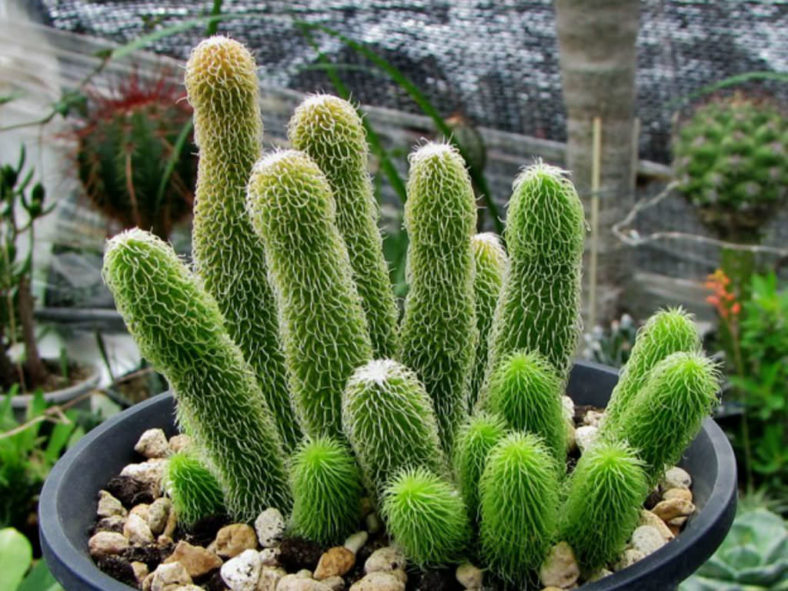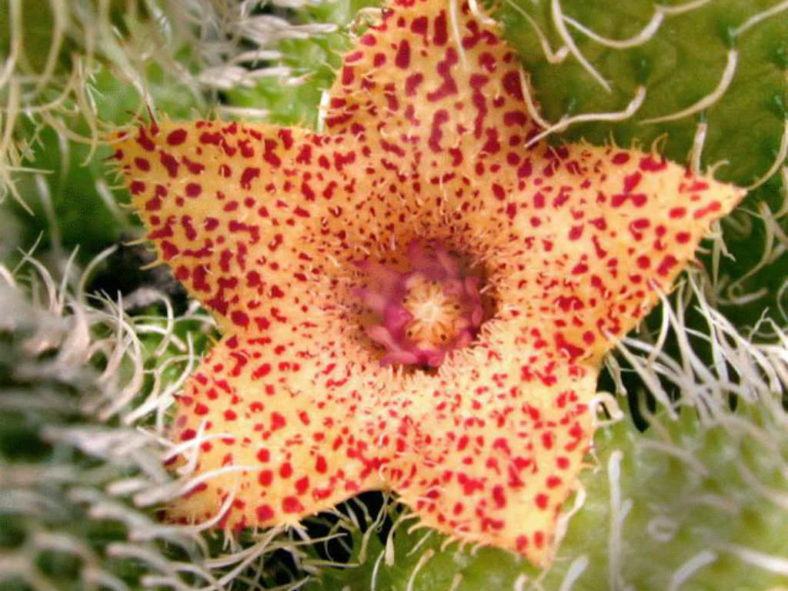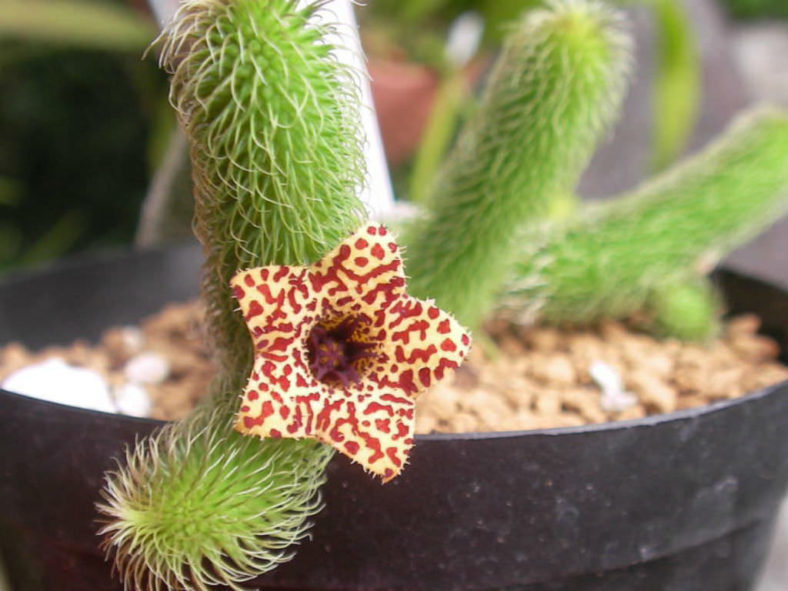Scientific Name
Stapelianthus pilosus Lavranos & D.S. Hardy
Synonym(s)
Trichocaulon decaryi, Ceropegia pilosa
Scientific Classification
Family: Apocynaceae
Subfamily: Asclepiadoideae
Genus: Stapelianthus
Origin
The native range of Stapelianthus pilosus is in the far south of Madagascar.
Description
Stapelianthus pilosus is a small, highly branched succulent that forms a clump of green to dark brown stems densely covered with tubercles, each tipped with a soft bristle. The stems are erect, ascending, or decumbent, cylindrical, up to 12 inches (30 cm) long, and up to 0.5 inches (1.3 cm) in diameter. Tubercles emerge green in spring but quickly assume their bright, eye-catching hues.
The flowers with five triangular lobes are yellow with brown spots, up to 0.7 inches (1.8 cm) across, and appear in late summer and fall.

Hardiness
USDA hardiness zones 9a to 11b: from 25 °F (−3.9 °C) to 50 °F (+10 °C).
How to Grow and Care
Stapeliads are relatively easy to grow. However, they should be treated as outdoor plants as they will easily rot indoors and cannot flower without exposure to outdoor temperature fluctuations. They should be grown under cover so that watering can be controlled. Stapeliads require a reasonable amount of sunlight to promote flowering and maintain a well-shaped plant. Very shady positions will produce very poor flowering.
These plants come from climates where they survive extremely high temperatures in the summer months, so most growth is in spring and fall, with flowering in fall when the weather cools down. In the growing season, give them moderate water, ensuring the soil is dry between waterings. Do not water between late fall and early spring.
The easiest and best way to propagate Stapeliads is from stem cuttings, which can be taken virtually throughout the year. Using the seeds is also a method to propagate Stapeliads.
Learn more at How to Grow and Care for Stapeliads.
Links
- Back to genus Stapelianthus
- Succupedia: Browse succulents by Scientific Name, Common Name, Genus, Family, USDA Hardiness Zone, Origin, or cacti by Genus
Photo Gallery
Click on a photo to see a larger version.



